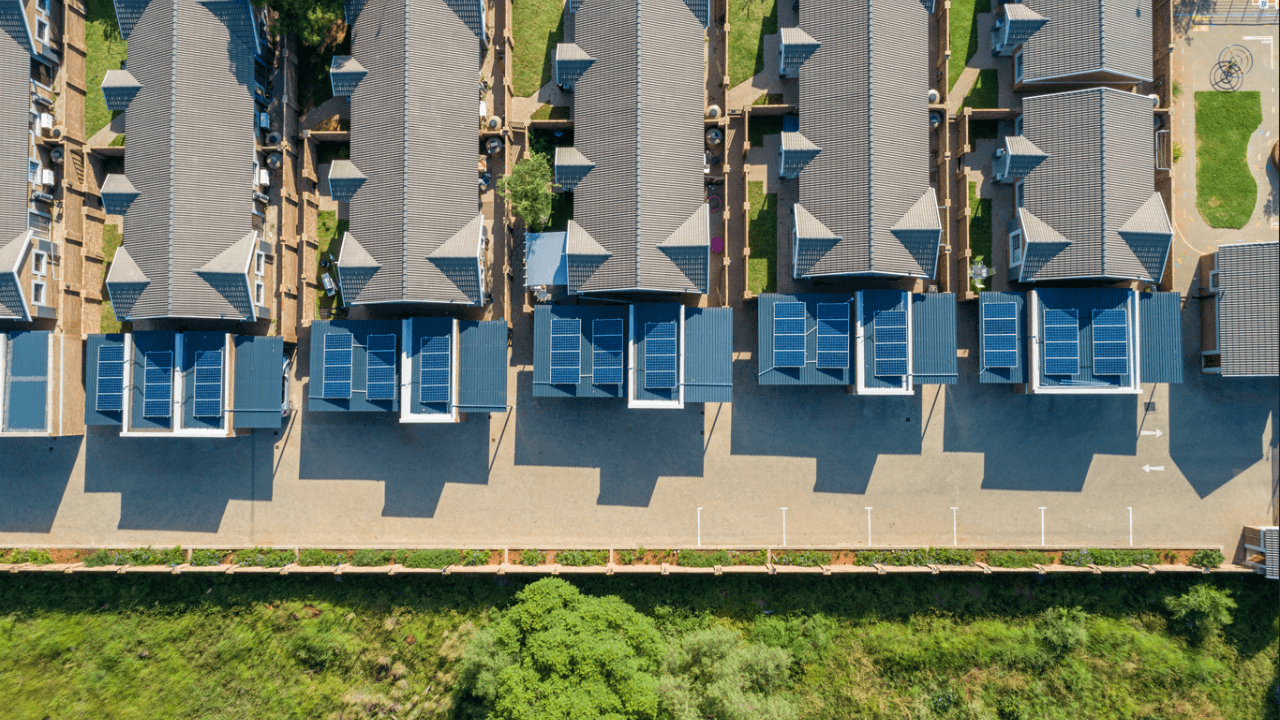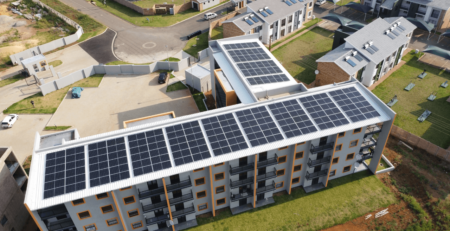Harnessing solar energy in sectional title schemes: finding the right approach
With rising electricity costs and a growing emphasis on sustainability, many sectional title schemes are exploring solar energy as a viable solution. However, choosing the best approach can be challenging, as it depends on factors such as cost, management, and long-term feasibility.
This guide outlines the key approaches to implementing solar energy in sectional title schemes, along with financing options that make the transition smoother.
Decentralised vs. centralised solar systems
Sectional title schemes can adopt solar energy through either a decentralised or centralised approach, each offering distinct benefits and considerations.
1. Decentralised solar systems
In a decentralised setup, individual unit owners install their own rooftop solar panels, providing them with autonomy and flexibility. This model is more common in homeowners’ associations, where owners have direct control over their roofs.
Key considerations:
- Approval requirements: Owners need body corporate (BC) consent before installation.
- Exclusive Use Areas (EUAs): The Body Corporate may allocate roof space to owners based on their Participation Quota (PQ), allowing them to install solar panels within defined restrictions.
- Aesthetic and safety regulations: Conduct rules should be in place to ensure uniformity and safety.
Despite its flexibility, this approach is rare in sectional title schemes, where the roof is common property managed by the Body Corporate.
2. Centralised solar systems
A centralised system involves the Body Corporate installing a shared solar solution for the entire scheme. This method ensures consistency in installation quality and offers streamlined energy distribution. However, implementation can be delayed if some owners object.
Key considerations:
- Greater control: The Body Corporate oversees the installation and management of the system.
- Cost efficiency: A shared system may provide better energy rates than individual setups.
- Financing options: Various funding mechanisms can be used to implement the system.
Financing a centralised solar system
If the Body Corporate chooses a centralised approach, it can either purchase the system outright or enter a financing agreement.
2.1 Outright purchase
A Body Corporate can fund a solar installation using:
- Reserve funds: Utilising existing funds for an upfront purchase.
- Special levies: Raising additional funds from residents.
- Project loans: Accessing financing solutions, such as STS’s Project Funding Solution, which offers flexible terms, no hidden fees, and competitive interest rates.
It’s essential to have an insurance and maintenance plan in place to ensure the long-term performance of the system.
2.2 Financing agreements
Financing agreements provide a cost-effective way to implement solar without upfront expenses. The two primary financing models are:
Roof rental
In a roof rental agreement, the BC leases its roof space to a solar developer, who installs and maintains the solar panels. The solar provider either sells the generated electricity to the grid or to the sectional title scheme, while the BC receives rental income.
Advantages:
- No upfront costs for the scheme.
- Potential revenue generation from unused roof space.
- Access to lower electricity rates.
Considerations:
- Special and unanimous resolutions may be required for rental agreements.
- Future roof alterations may be restricted.
- The scheme depends on the reliability of the solar provider.
Power Purchase Agreement (PPA)
A PPA is a contract between the BC and a solar provider, where the provider installs and maintains a solar system on the scheme’s common property. The BC agrees to purchase the generated electricity at a pre-agreed rate, typically lower than municipal tariffs. Payments are based on energy usage, usually over a 10- to 25-year period.
Advantages:
- No upfront capital investment required.
- Fixed electricity rates provide long-term savings.
- Maintenance and repairs are handled by the provider.
Considerations:
- The BC commits to a long-term contract.
- Ownership of the system may or may not transfer to the scheme after the contract period.
How Bright Light can help your residential scheme
Bright Light, in partnership with STS, offers a customised PPA solution called the Electricity Services and Supply Agreement (ESSA). This agreement provides sectional title schemes with flexible solar energy solutions tailored to their specific needs.
Key benefits of ESSA:
- Customisable terms: Agreements range from 10 to 25 years, depending on the scheme’s requirements.
- No hidden fees: The only cost is based on electricity consumption.
- Comprehensive coverage: Includes installation, insurance, maintenance, and repairs.
- Battery storage options: Subject to tariff structures, battery solutions may be included at no additional cost to residents.
Getting started with ESSA
To explore the ESSA solution, sectional title schemes can:
- Contact Bright Light with their current utility bills and energy needs.
- Undergo a feasibility study to assess solar viability.
- Receive a tailored solar energy proposal based on their consumption patterns.
Conclusion
Solar energy is an excellent solution for sectional title schemes looking to lower electricity costs and reduce their environmental impact. Whether opting for a decentralised or centralised approach, proper planning and community engagement are crucial for a successful transition.
For expert guidance on implementing solar in your sectional title scheme, reach out to us today. Let’s work together to create a sustainable and cost-effective energy future for your community.




